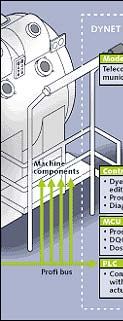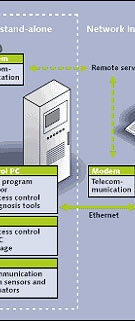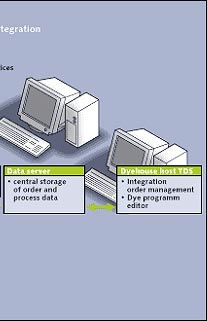Process control is regarded as a one of the most
vital aspects of quality assurance operation. For example in the case of
textile operations, like batch dyeing, there could be many variables
which are under the control of dyer's, but there would be many more that
are not. Typically these factors interact in a a complex way. That is
the reason why a dyehouse having its eye on future must have better
process control systems. Recently control hardware has made great
advancements. The emergence of cheap, dynamic, high speed digital
micro-processors has made easy different dyeing applications.
Micro-processor hardware has been now developed to a very high state of
performance and reliability.
A typical control system includes micro-processors that has:
- Control algorithms along with interfaces
- A state of the art multichannel l/O that comes with two way
digital/ analog conversion
- Having communication abilities that are both synchronous and
asynchronous
- Monitoring and sensors, that comes with interfaces
- Process devices (e.g. pumps, valves)
- Networking capabilities upload/download
The Control unit shown in the diagram consists of a Computer that
has a very latest advanced touch screen user interface. It also consist
of a main control unit or MCU. The dyeing programmes and other necessary
parameters are loaded completely into the MCU. The MCU automatically
controls the program. It runs in tandem with the PLC-control unit. Which
effectively means that the machine can function independently of the
computer. The control system is totally networked to the main automation
control station, so that there can be easy inter-access of data along
with the option of operational accessibility.

 These
days dyers are relying more and more on digital process control
system to increase efficiency and product quality along with
reduction in utility and production costs. Using a reliable control
system, variables like temperature is controlled automatically and
accurately.
These
days dyers are relying more and more on digital process control
system to increase efficiency and product quality along with
reduction in utility and production costs. Using a reliable control
system, variables like temperature is controlled automatically and
accurately. 

